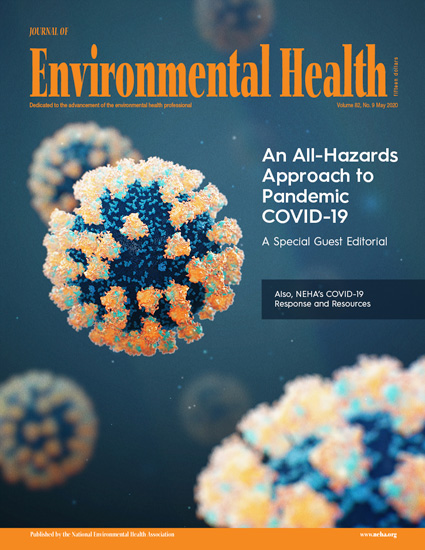暴露于住宅交通与不健康老龄化的轨迹:来自具有全国代表性的老年人队列的结果
IF 5.3
2区 环境科学与生态学
Q1 ENVIRONMENTAL SCIENCES
引用次数: 0
摘要
交通暴露与生物老化加剧的生物标志物、与年龄相关的慢性疾病以及呼吸系统、心血管和全因死亡率的上升有关。至于交通暴露是否与功能障碍和不健康的老龄化轨迹有关,目前尚不清楚。具有全国代表性的人群队列中有 3,126 名年龄≥60 岁的社区居民,他们在 10 年内每年两次就诊 8,291 次。根据 52 项健康缺陷的数量和严重程度,包括 22 项客观测量的身体和认知功能障碍,采用缺陷累积指数(DAI)对不健康老龄化进行了估计。每次随访时,50 米和 100 米处住宅交通密度(RTD)的五分位数以及与加油站最近距离的 DAI 差异,均采用灵活的边际结构模型和反删减概率权重进行估算。模型根据社会人口学因素和随时间变化的生活方式因素、人口普查区的社会贫困指数和居住地的自然空间暴露情况进行了调整。基线时,参与者的平均年龄(SD)和DAI得分分别为69.0(6.6)岁和17.02(11.0)%,54.0%为女性。50米和100米处的RTD中位数(IQR)分别为77(31-467)辆/天和509(182-1802)辆/天,到最近加油站的平均距离(SD)为962(1317)米。在 50 米处,RTD 五分位数 Q2-Q5(与 Q1 相比)参与者的 DAI 平均增幅(95%CI)分别为 1.51(0.50,2.53)、0.98(-0.05,2.01)、2.20(1.18,3.21)和 1.98(0.90,3.05)。在 100 米距离上也观察到了一致的结果。从各领域来看,随着 RTD 的增加而累积的大多数缺陷都是功能性的,尽管 50 米处的 RTD 也与自我报告的健康状况较差、活力问题增加以及慢性病发病率较高有关。居住地离加油站越近,功能障碍和慢性疾病的发病率越高。暴露于附近居民区的交通与加速不健康老龄化的轨迹有关。减少交通污染应成为增加老年人健康寿命的优先干预措施。本文章由计算机程序翻译,如有差异,请以英文原文为准。
Exposure to residential traffic and trajectories of unhealthy ageing: results from a nationally-representative cohort of older adults
Traffic exposure has been associated with biomarkers of increased biological ageing, age-related chronic morbidities, and increased respiratory, cardiovascular, and all-cause mortality. Whether it is associated with functional impairments and unhealthy ageing trajectories is unknown. Nationally representative population-based cohort with 3,126 community-dwelling individuals aged ≥60 years who contributed 8,291 biannual visits over a 10 year period. Unhealthy ageing was estimated with a deficit accumulation index (DAI) based on the number and severity of 52 health deficits, including 22 objectively-measured impairments in physical and cognitive functioning. Differences in DAI at each follow-up across quintiles of residential traffic density (RTD) at 50 and 100 meters, and closest distance to a petrol station, were estimated using flexible marginal structural models with inverse probability of censoring weights. Models were adjusted for sociodemographic and time-varying lifestyle factors, social deprivation index at the census tract and residential exposure to natural spaces. At baseline, the mean (SD) age and DAI score of the participants were 69.0 (6.6) years and 17.02 (11.0) %, and 54.0% were women. The median (IQR) RTD at 50 and 100 meters were 77 (31-467) and 509 (182-1802) vehicles/day, and the mean (SD) distance to the nearest petrol station of 962 (1317) meters. The average increase in DAI (95%CI) for participants in quintiles Q2-Q5 (vs Q1) of RTD at 50 meters was of 1.51 (0.50, 2.53), 0.98 (-0.05, 2.01), 2.20 (1.18, 3.21) and 1.98 (0.90, 3.05), respectively. Consistent findings were observed at 100 meters. By domains, most of the deficits accumulated with increased RTD were of a functional nature, although RTD at 50 meters was also associated with worse self-reported health, increased vitality problems and higher incidence of chronic morbidities. Living closer to a petrol station was associated with a higher incidence of functional impairments and chronic morbidities. Exposure to nearby residential traffic is associated with accelerated trajectories of unhealthy ageing. Diminishing traffic pollution should become a priority intervention for adding healthy years to life in the old age.
求助全文
通过发布文献求助,成功后即可免费获取论文全文。
去求助
来源期刊

Environmental Health
环境科学-公共卫生、环境卫生与职业卫生
CiteScore
10.10
自引率
1.70%
发文量
115
审稿时长
3.0 months
期刊介绍:
Environmental Health publishes manuscripts on all aspects of environmental and occupational medicine and related studies in toxicology and epidemiology.
Environmental Health is aimed at scientists and practitioners in all areas of environmental science where human health and well-being are involved, either directly or indirectly. Environmental Health is a public health journal serving the public health community and scientists working on matters of public health interest and importance pertaining to the environment.
 求助内容:
求助内容: 应助结果提醒方式:
应助结果提醒方式:


